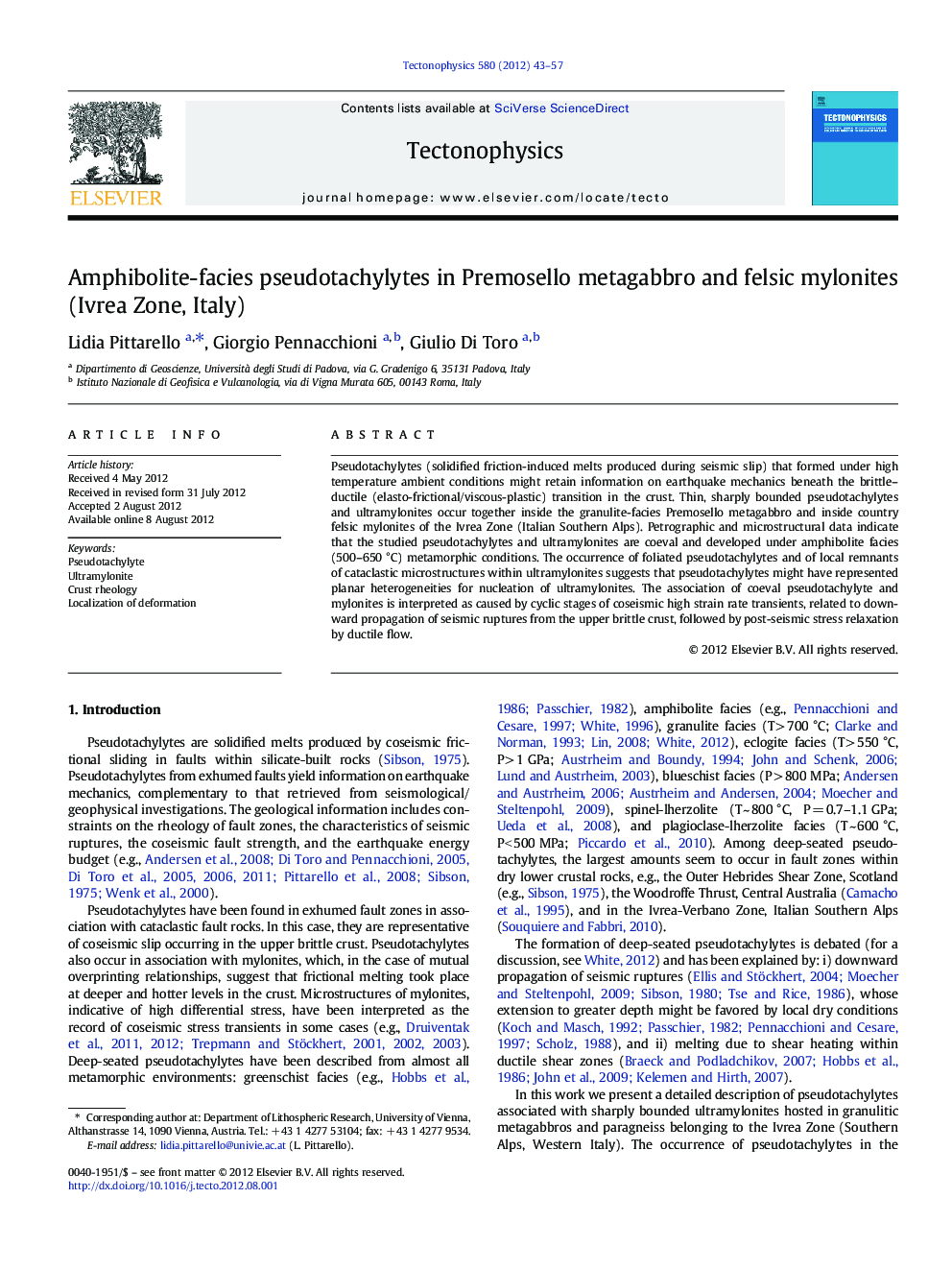| کد مقاله | کد نشریه | سال انتشار | مقاله انگلیسی | نسخه تمام متن |
|---|---|---|---|---|
| 6434181 | 1636805 | 2012 | 15 صفحه PDF | دانلود رایگان |

Pseudotachylytes (solidified friction-induced melts produced during seismic slip) that formed under high temperature ambient conditions might retain information on earthquake mechanics beneath the brittle-ductile (elasto-frictional/viscous-plastic) transition in the crust. Thin, sharply bounded pseudotachylytes and ultramylonites occur together inside the granulite-facies Premosello metagabbro and inside country felsic mylonites of the Ivrea Zone (Italian Southern Alps). Petrographic and microstructural data indicate that the studied pseudotachylytes and ultramylonites are coeval and developed under amphibolite facies (500-650 °C) metamorphic conditions. The occurrence of foliated pseudotachylytes and of local remnants of cataclastic microstructures within ultramylonites suggests that pseudotachylytes might have represented planar heterogeneities for nucleation of ultramylonites. The association of coeval pseudotachylyte and mylonites is interpreted as caused by cyclic stages of coseismic high strain rate transients, related to downward propagation of seismic ruptures from the upper brittle crust, followed by post-seismic stress relaxation by ductile flow.
⺠Metagabbros and felsic rocks from the Ivrea Zone are cut by pseudotachylytes and ultramylonites. ⺠Pseudotachylytes and ultramylonites are coeval and formed under amphibolite metamorphic facies. ⺠Pseudotachylytes likely acted as precursor heterogeneities for ultramylonite nucleation. ⺠Frictional melt probably generated by downward propagation of seismic ruptures into dry rocks. ⺠Ductile overprint of pseudotachylytes was likely driven by post-seismic stress relaxation.
Journal: Tectonophysics - Volume 580, 10 December 2012, Pages 43-57